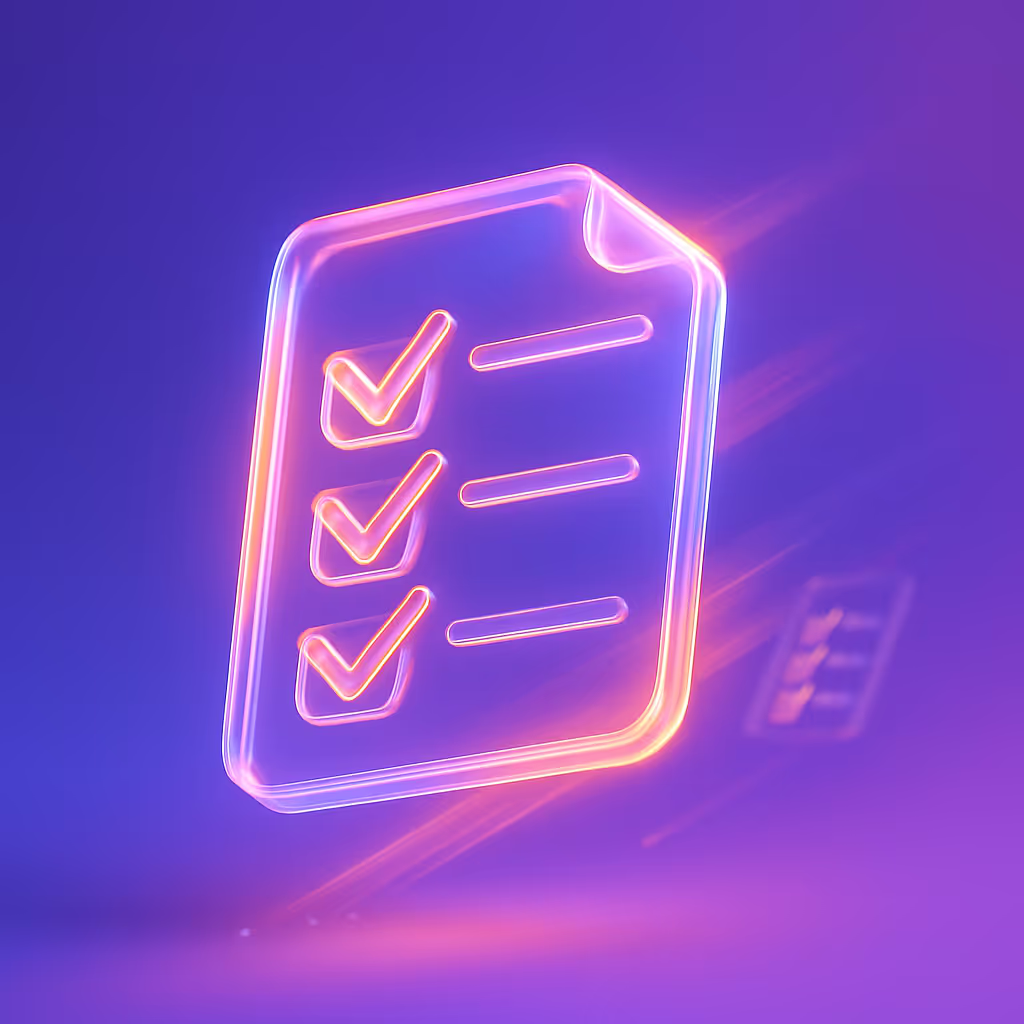B2B sales teams face tough competition and rising pressure to produce results from outbound prospecting.
Manual research to find quality leads is slow and often results in missed opportunities. As expectations rise for multi-channel outreach, sales teams struggle to keep up with the growing volume of emails, LinkedIn messages, and follow-ups, all while trying to make each message genuinely relevant to the recipient.
Personalization at scale remains a challenge. Without automation, it becomes nearly impossible to engage each prospect with timely, targeted messaging that stands out. Traditional tools like spreadsheets or basic CRMs leave gaps in workflow, drain productivity, and limit reporting insight. As a result, sales professionals spend valuable hours switching between platforms, copying data, and launching campaigns with limited visibility into what drives conversions.
Why Modern Sales Platforms Are Essential
Modern sales platforms change this reality by centralizing and automating outbound lead generation. These platforms combine AI-driven prospecting, automated outreach, and integrated analytics—empowering B2B teams to focus more on selling and less on managing repetitive, manual tasks. Tools such as Overloop now enable teams to source leads, send personalized messages, and track results within a single platform, closing workflow gaps and reducing manual effort. Learn how Lemons uses Overloop AI to achieve over 25% reply rates.
Sales platforms allow teams to maintain high-volume outreach without sacrificing relevance or deliverability. By adopting a modern sales platform for outbound lead generation, organizations position themselves to scale with less friction, deliver more effective campaigns, and respond faster to market shifts.
Key Challenges in Manual Outbound Prospecting
B2B sales teams often face significant obstacles when relying on manual outbound prospecting. Manual processes slow down lead generation and drain productivity. The sheer volume of tasks—finding accurate contact information, qualifying leads, sending emails, and posting on LinkedIn—requires hours each week. This workload limits how quickly a team can build and act on prospect lists.
Challenges of Multi-Channel Outreach
Managing outreach across multiple channels compounds these difficulties. Teams must constantly shift between tools for email, social media, and CRM updates. This fragmentation leads to mistakes, missed follow-ups, and lost opportunities. Campaigns lack consistency, with messages getting buried among scattered contacts and spreadsheets.
Limits of Personalization Without Automation
Retention and conversion rates improve with personalization, but tailoring each message to every prospect manually is not sustainable at scale. Sales reps face the choice of either reducing the volume of outreach to ensure relevance or pushing quantity at the cost of quality. In both cases, results suffer. Traditional approaches cannot support the high level of customized, timely messaging modern buyers expect.
Platforms such as Overloop solve these problems by automating lead research, synchronizing multi-channel activities, and creating personalized outreach with minimal manual input. This approach empowers teams to focus on strategic engagement, rather than repetitive administrative tasks, resulting in greater efficiency and higher outbound success rates.
What Is a Sales Platform? Understanding the Core Features
A sales platform offers a single workspace where B2B sales teams manage every stage of outbound lead generation. These platforms bring structure and automation to complex sales processes, reducing manual work while increasing visibility and control. At the core, a sales platform addresses five essential functions for outbound teams. See the full feature list.
Lead Sourcing and Qualification
Effective sales platforms help users build and update prospect lists by automatically finding leads that match specified criteria. This eliminates the need for tedious manual research. Overloop, for example, leverages an AI-powered B2B database to surface accurate leads and verify contact details in real time, streamlining prospect discovery for sales teams.
Workflow Automation
Workflow automation reduces routine tasks such as data entry, follow-up scheduling, and activity reminders. Sales professionals can automate these steps, allowing them to engage with more prospects without repetitive busywork.
Personalized Outreach
Highly relevant outreach increases engagement rates. Modern sales platforms use data-driven templates and AI to craft personalized email and LinkedIn messages tailored to each segment. This supports true one-to-one communication at scale, helping users stand out in crowded inboxes.
Campaign Tracking and Analytics
Detailed tracking shows teams which campaigns drive the best results. Key metrics—such as open rates, response rates, and deal progression—are consolidated in one place, allowing for data-backed decisions and rapid optimization.
Integrations With Sales Tools
Seamless integrations connect the sales platform to CRMs, calendars, and communication apps. This connectivity keeps data aligned and supports a smooth sales workflow from prospecting to closing.
How Sales Platforms Automate Outbound Lead Generation
Sales platforms transform outbound lead generation by combining automation, workflow alignment, and data-driven outreach. The first step is automated prospect identification. Instead of searching countless sources for contacts, sales platforms use built-in databases or connect to external data providers. For example, Overloop uses AI to find prospects who match specific criteria, eliminating the need for manual list building. How Marker.io turned cold emails into free trial signups with Overloop.
Streamlined Multichannel Communication
Modern sales platforms manage outreach across email, LinkedIn, and other channels from one interface. This enables teams to schedule follow-ups, track conversations, and maintain message consistency. By centralizing these activities, platforms make it easy to sustain momentum and reduce the risk of missed connections.
Automation of Repetitive Tasks
Tasks such as sending emails, following up, and updating CRM records no longer require manual attention. Sales platforms trigger actions based on prospect behavior—such as opening an email or replying—allowing for tailored, efficient responses. Overloop automates both outreach and task management, supporting high-volume campaigns without sacrificing personalization.
Consolidated Sales Activities for Better Workflow
By housing prospect lists, campaign management, and reporting in one system, sales platforms remove context switching and data duplication. Teams benefit from real-time visibility into pipeline health, activity metrics, and campaign outcomes. This structure improves accountability and ensures resources focus on activities that generate measurable results.
Setting Up an Outbound Sales Platform: Essential Steps
Deploying a dedicated sales platform streamlines outbound processes, but setup is critical for long-term success. Teams aiming for consistent, scalable outreach benefit from a structured, step-by-step approach.
User Onboarding and Access Management
Start by inviting all relevant team members and assigning appropriate roles. Clear permissions ensure data security and lay the groundwork for transparent collaboration. Onboarding resources and tutorials also help new users quickly become productive.
Building Targeted Lists
Effective outbound campaigns begin with well-defined lead lists. Teams should define ideal customer profiles, set filters, and use built-in lead sourcing tools to populate a qualified database. Platforms with AI-driven search, such as Overloop, save significant time and boost data accuracy. Consistently update and refine these lists based on campaign feedback.
Importing and Verifying Leads
Import existing contacts via CSV files or CRM integrations, then verify email addresses to reduce bounce rates. Verified leads support higher deliverability and ensure efforts focus on real, reachable prospects. See pricing and plan details.
Configuring Campaigns and Messaging
Create outreach templates for each channel—email, LinkedIn, or calls. Set up campaign flows, trigger schedules, and define personalization fields to tailor messages to each buyer segment. Platforms like Overloop offer built-in AI personalization and deliverability protection to improve outreach relevance and performance.
By following these steps, sales teams establish a strong foundation for automated outbound lead generation and support reliable, measurable pipeline growth from day one.
Overloop: AI-Powered Automation for B2B Outbound Success
Many B2B sales teams now rely on Overloop to eliminate the bottlenecks found in conventional prospecting workflows. Overloop leverages AI throughout every stage of outbound lead generation, allowing teams to spend more time connecting with prospects and less time on manual tasks. This approach addresses the core pain points faced by sales professionals: slow list building, fragmented campaigns, and generic outreach.
AI-Driven Prospect Sourcing and Qualification
The platform sources prospect data from a global B2B database with over 450 million contacts. Users specify filters such as company size, industry, or role. Overloop’s system then delivers up-to-date, verified contacts, removing the need for manual research. It immediately qualifies each profile using your pre-set criteria, helping teams focus on the right leads from the start.
Automated Personalization at Scale
Effective outreach demands relevance. Overloop’s AI writes custom emails and LinkedIn messages for each prospect, referencing specific details like company news or shared interests. This ensures personalization happens automatically at any volume, improving reply rates without adding extra workload for sales reps.
Multichannel Campaign Management and Analytics
All campaigns—email, LinkedIn, or both—run from a central dashboard. Overloop schedules follow-ups, tracks engagement, and monitors deliverability. Data-rich analytics show which messages and channels convert best, guiding fast, informed adjustments.
These features allow B2B teams to scale outbound efforts with accuracy and speed, minimizing repetitive work and boosting measurable results. See how 87seconds started meaningful conversations at scale.
Integrating Sales Platforms With Your Existing Tech Stack
A connected sales tech stack eliminates workflow silos and data re-entry, creating a single source of truth for your outbound team. Integrating your sales platform with critical business tools ensures accurate records, consistent outreach, and faster follow-up, directly increasing lead conversion rates.
Critical Integrations That Drive Sales Productivity
Key integrations enhance the efficiency and effectiveness of outbound operations. A sales platform should connect directly to:
- CRMs (e.g., Salesforce, HubSpot, Pipedrive) for automatic syncing of contacts, activity logs, and opportunity status.
- Email clients to send, track, and personalize outreach within the same platform, reducing tab switching and manual copy-paste errors.
- Calendar tools for easy meeting scheduling and automated follow-up reminders.
- Internal communication apps (e.g., Slack) to trigger notifications, task handoffs, or team updates as deals progress.
Seamless integrations allow outbound teams to trigger campaigns, track engagement, and update records without disrupting their flow. When sales actions stay synchronized across systems, teams minimize double work and ensure no opportunity goes unmanaged. Overloop, for example, connects natively with Salesforce, HubSpot, Pipedrive, Slack, and Calendly—providing a unified workplace for every outbound step. With this approach, sales teams spend less time on admin and more time on direct prospect engagement, supporting higher output and more reliable reporting.
Workflow Automation and Personalization at Scale
Automation changes how outbound sales teams approach daily operations. Instead of manually scheduling follow-ups, tracking responses, or segmenting leads, automated workflows execute these tasks based on real-time triggers and prospect behavior. This means each prospect receives timely outreach—improving engagement rates and freeing up sales reps for higher-value conversations. Read more outbound automation tips on the blog.
How Automation Delivers Timely and Relevant Outreach
With modern sales platforms, sales sequences run automatically. When a prospect opens an email or clicks a link, the system adjusts next steps without manual oversight. This speeds up reaction times and ensures consistently prompt follow-up. Teams avoid common pitfalls such as missing an ideal outreach window or sending duplicate messages.
Personalization at Scale: Data-Driven Messaging
Scalable personalization uses prospect data to tailor content for each segment and individual. Platforms like Overloop use AI to insert company names, job roles, or recent news into emails, ensuring that every interaction feels targeted. There is no need to handcraft each message. This approach applies to emails, LinkedIn messages, and other touchpoints, maintaining a relevant, personal experience for every lead in the funnel.
By integrating these capabilities, sales teams sustain quality interactions even as outreach volume grows. They meet prospects with contextually relevant messaging—promptly, and at scale—without increasing their workload.
Best Practices to Maximize Outbound Lead Conversion
Improving the conversion rate of outbound campaigns relies on disciplined execution and continuous learning. Sales teams that structure their work around proven practices achieve more consistent results and adapt faster to changes in buyer behavior.
Test Outreach with A/B Experiments
Running A/B tests on subject lines, messaging, or send times reveals which combinations drive higher response rates. Award-winning outbound teams regularly test new copy against proven templates to identify improvements. Analyzing small data sets can highlight significant differences—often, even minor tweaks to the opener or call-to-action will increase engagement. Overloop lets you set up A/B testing for email campaigns, streamlining the feedback cycle.
Use Data-Driven Targeting
Refined targeting means focusing on prospects that closely match your ideal customer profile. Leverage filters such as industry, company size, or geography. Adjust these settings based on ongoing campaign performance to invest resources where they have the most impact. Platforms with enriched databases help users keep lead lists fresh with reliable, high-quality contacts.
Continuously Optimize Outreach
Sales processes require regular review. Monitor campaign analytics to spot trends and spot early warning signs, such as declining open or reply rates. Use these insights to pause, adjust, or stop underperforming sequences quickly. Features like Overloop’s built-in analytics and engagement timelines allow fast identification of what works best for each segment or channel.
Leverage Platform Analytics for Better Decisions
Deep analytics help uncover which tactics lead to the most conversions, and which should be retired. Review performance by persona, industry, and campaign type to make data-backed choices. Integrating analytics with your CRM provides a complete view of the sales pipeline and supports more precise reporting for stakeholders.
Evaluating and Choosing the Right Sales Platform for Outbound Success
Choosing the right sales platform determines how efficiently your outbound team operates and the results you achieve. To make sure your investment supports long-term outbound success, use a clear checklist that weighs technical fit with everyday usability. Book a live demo to see the platform in action.
Checklist for Assessing a Sales Platform
- Ease of Use: The interface should be straightforward for both new and experienced users. A clean dashboard reduces ramp-up time and encourages team-wide adoption.
- Feature Set: Look for robust lead sourcing, multi-channel outreach, and workflow automation. Key tools include AI-powered research, message personalization, and integrated campaign management.
- Automation Level: Effective platforms automate repetitive outreach, lead qualification, data syncing, and follow-up reminders. Automation lets sales reps focus on conversations, not admin.
- Reporting Capabilities: Ensure access to campaign analytics, engagement rates, and activity logs. Data should be easy to interpret and actionable for optimizing campaigns.
- Integrations: Platforms must connect with CRMs, email, calendar, and internal chat tools. This integration keeps workflows seamless and data consistent.
- Support: Reliable customer support, documentation, and onboarding resources save time and prevent stalled projects.
- Cost: Balance per-user pricing with platform value and included features. Factor in potential savings from automation and reduced manual workload.
When evaluating tools like Overloop, prioritize flexibility and alignment with your outbound process. The right platform fits into your sales stack, scales with your growth, and simplifies daily execution—enabling higher conversion rates with less manual effort.
Conclusion: Building a Scalable Outbound Engine With the Right Sales Platform
A dedicated sales platform clears the obstacles that keep outbound teams from reaching their goals. By automating prospect sourcing, outreach, and routine tasks, these platforms remove manual bottlenecks that slow teams down. The benefits are easy to see: more qualified leads in your pipeline, faster response times, and a reliable process for handling larger campaign volumes without losing personalization.
Modern platforms align your sales workflow across channels, reducing the risk of lost data or missed follow-ups. Teams that rely on centralized tools respond to buyers with relevance—at scale—and make decisions based on timely analytics. This increases conversion rates and produces more consistent results over time. Discover more customer success stories here.
When choosing your sales platform, focus on essential factors:
- Ease of use for your team
- Comprehensive workflow automation
- Seamless integrations with your current tech stack
- Advanced personalization tools
- Actionable analytics for ongoing optimization
Platforms like Overloop make it possible for B2B sales teams to automate list building, personalize messages automatically, and manage campaigns from one place. High-quality prospect data, deliverability protection, and built-in analytics give your team the foundation needed to scale efficiently. By adopting such a platform, you move beyond manual overhead and fragmented tools, giving your team more capacity to nurture and win accounts.
The path to consistent outbound success starts with the right infrastructure. Equip your team with tools that automate routine work and ensure every prospect gets a timely, targeted experience. This positions your sales process for sustainable growth and lasting competitive advantage.



